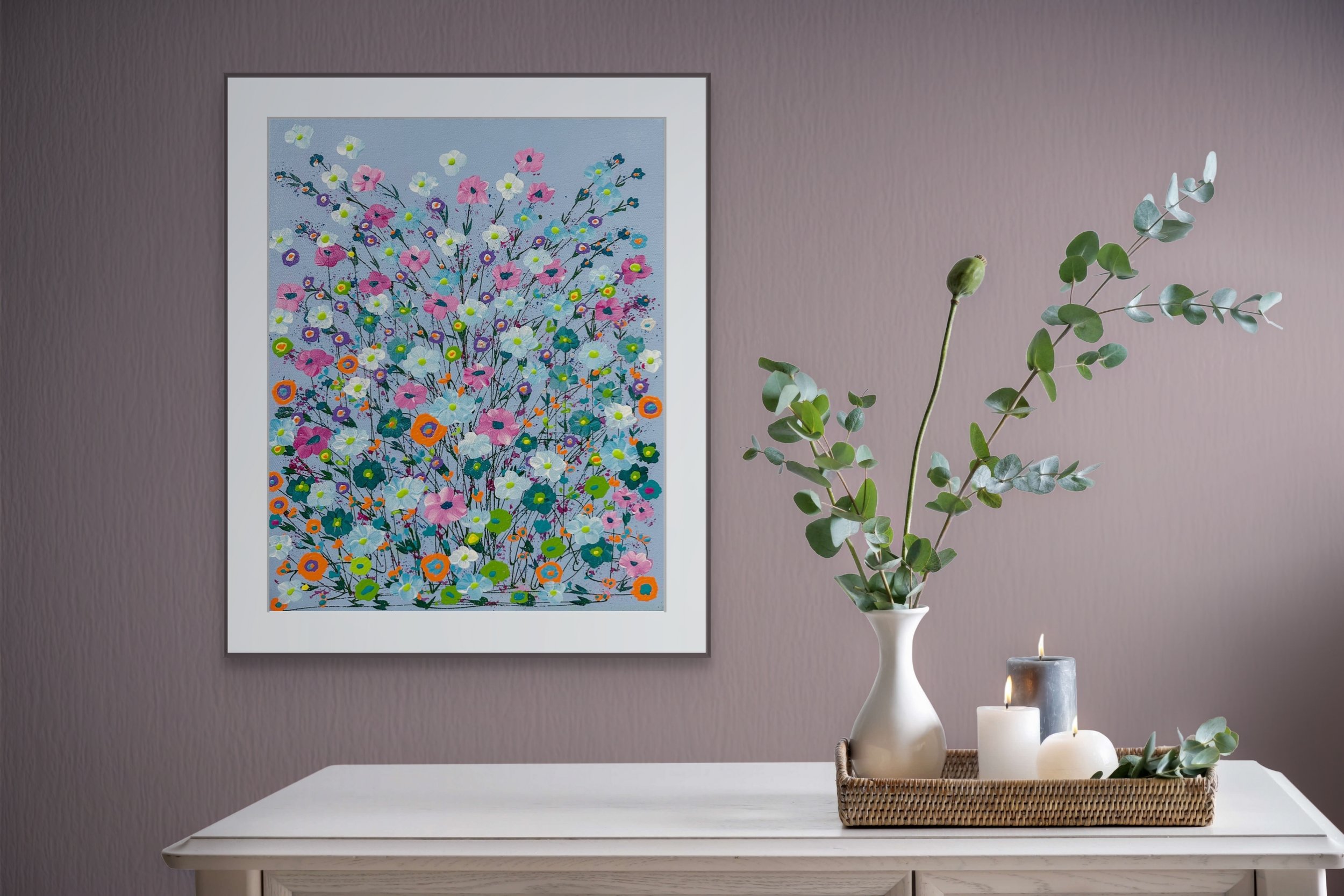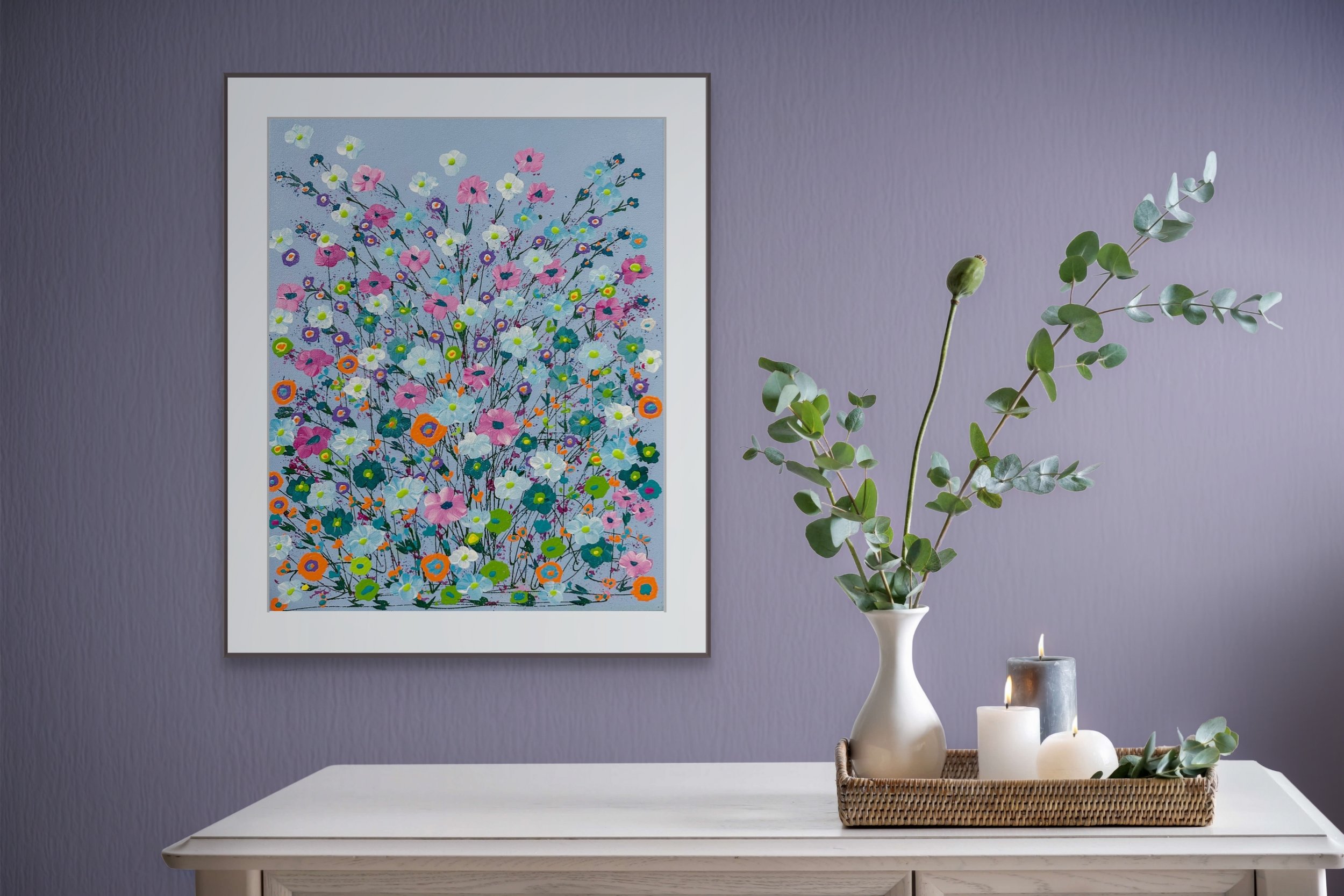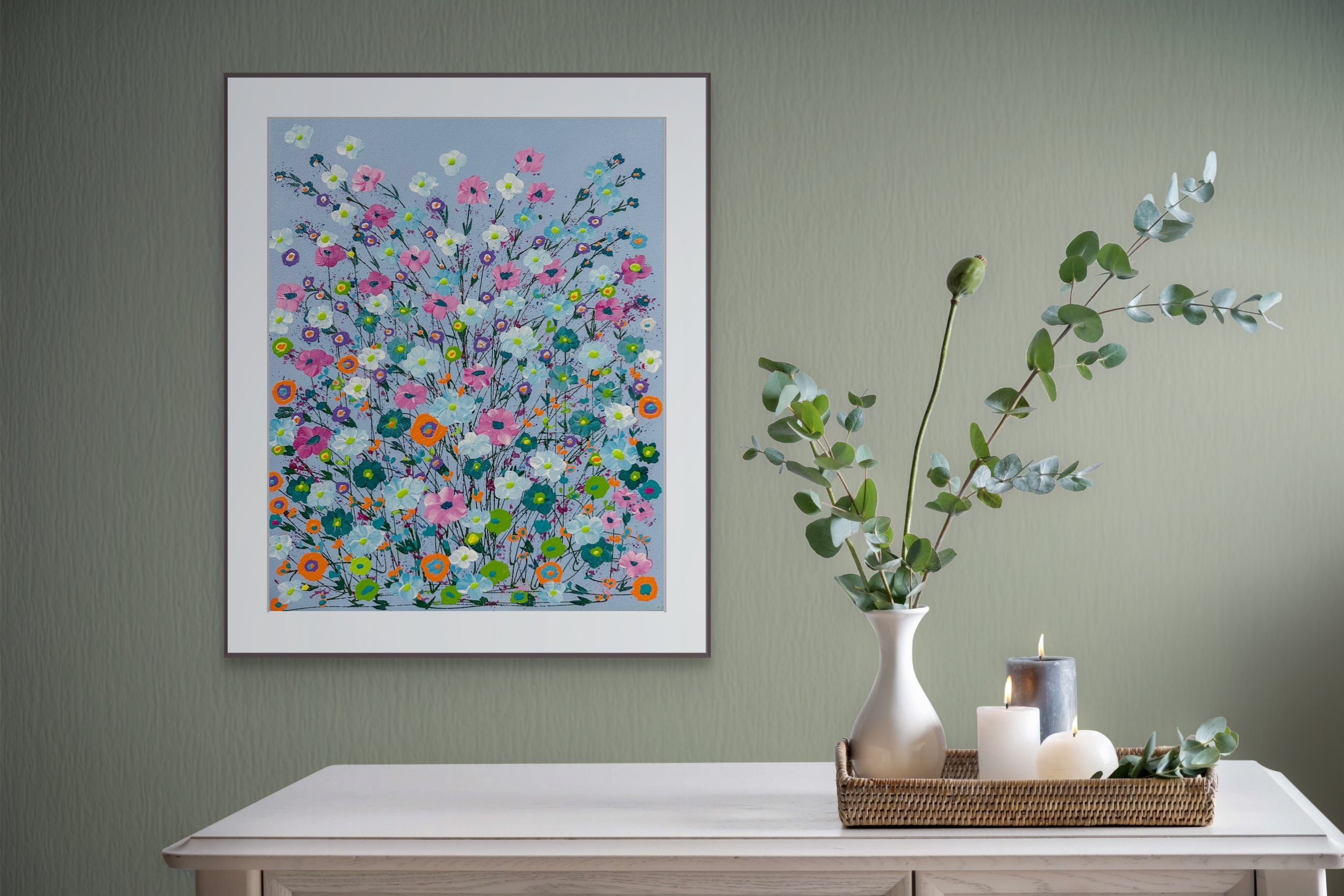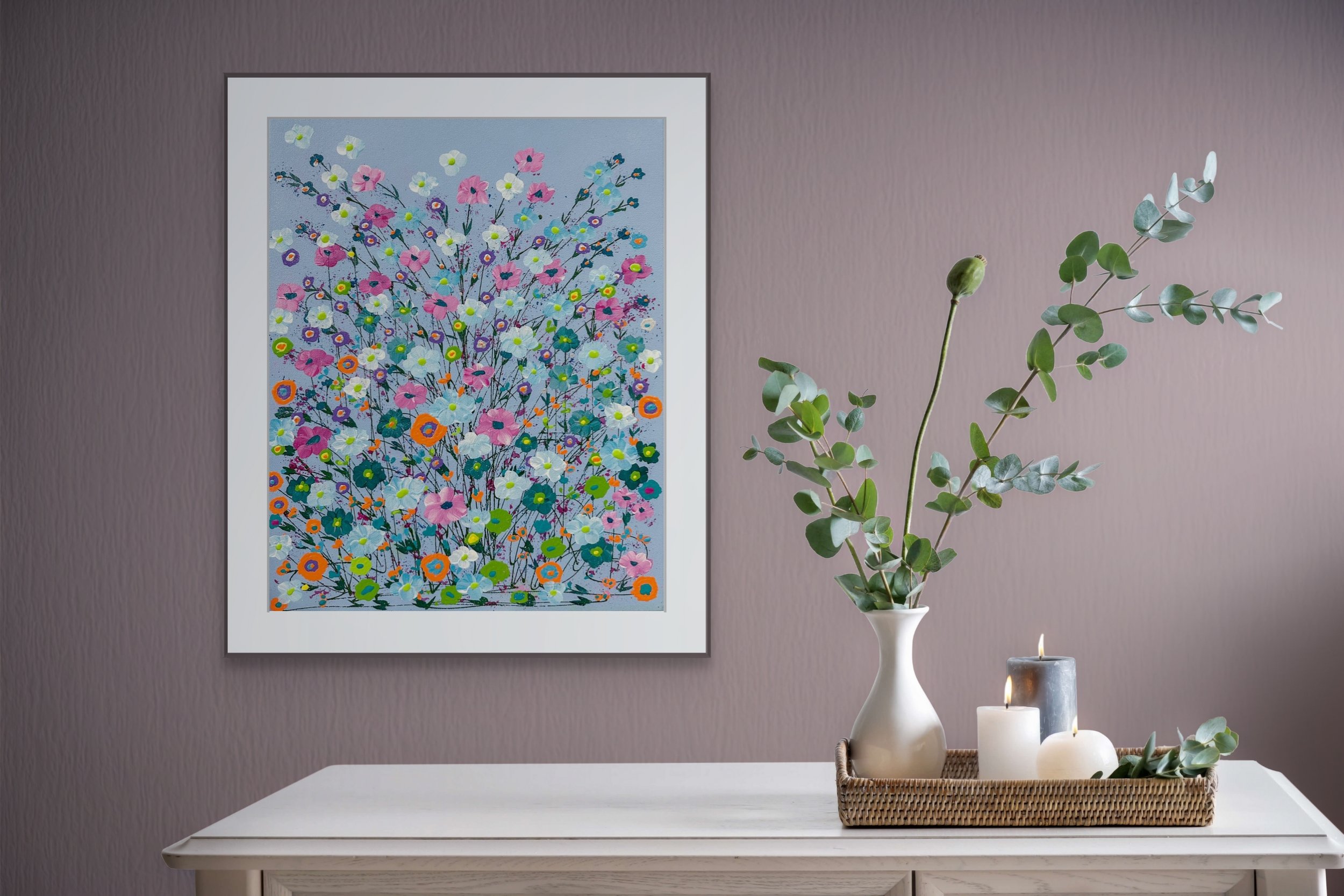Experimenting With Art And Health
I’m an artist and innovator in the field of art and health, so I like to experiment a lot.
Recently ARTPLACER.com, an art placement company I really enjoy, added patient rooms to their excellent selection of mockup photos. Today my happy evidence-based design art hangs in so many different physical settings, but I have always told people I never considered it a good fit for the inside of a hospital patient’s room.
With ARTPLACER’S new mockup photos, here was my chance to really experiment within the inside of patient rooms, so I did.
When I create evidence-based design art, I think back to when I needed two major surgeries in different parts of my body in less than 30 days. Through this experience I realized there were so many different stages involved—such as the in-hospital pre-operation stage, the in-hospital post-operation stage, and the at-home longterm recovery stage. I also realized how my needs were different during each stage.
Right after surgery, while in my patient room, I felt that my entire body had been seriously assaulted and traumatized—and it had. The hospital, the staff, and my two doctors were all excellent, but that’s just what happens when a human body needs major surgical operations.
While inside my patient room, what I needed most was a total relief from any additional stimulation or trauma. Most of my evidence-based art is strategically and deliberately designed to not stress, but it is also designed to stimulate.
The trick—or I should say the skill—as an evidence-based design patient room artist is to create a work of art that is lovely according to the evidence-based design guidelines but is also one that does not cause too much brain stimulation. The art should be lovely without impact.
Placing different pieces of my art in ARTPLACER’S new hospital rooms, I was able to do some experimenting and here are some things I discovered.
Very much to my surprise, some of my florals did very well, even in a darker patient room. They were lovely and uplifting and fit comfortably in this room without creating too much stimulation to the brain.
I was even more surprised to see that even my bolder evidence-based design florals succeeded. They clearly delivered happiness and cheer without causing any stress or trauma.
Here are some of my other evidence-based design paintings that I thought might just work inside a patient room. I have always felt that my ideal hospital patient room should have carefully selected works of real art on the wall. Bland, boring, stereotypical designs actually frighten me. It’s as if this art makes a kind of heart monitor flatline sound. For me, art is hyper visual but it’s also always full of music and sound.
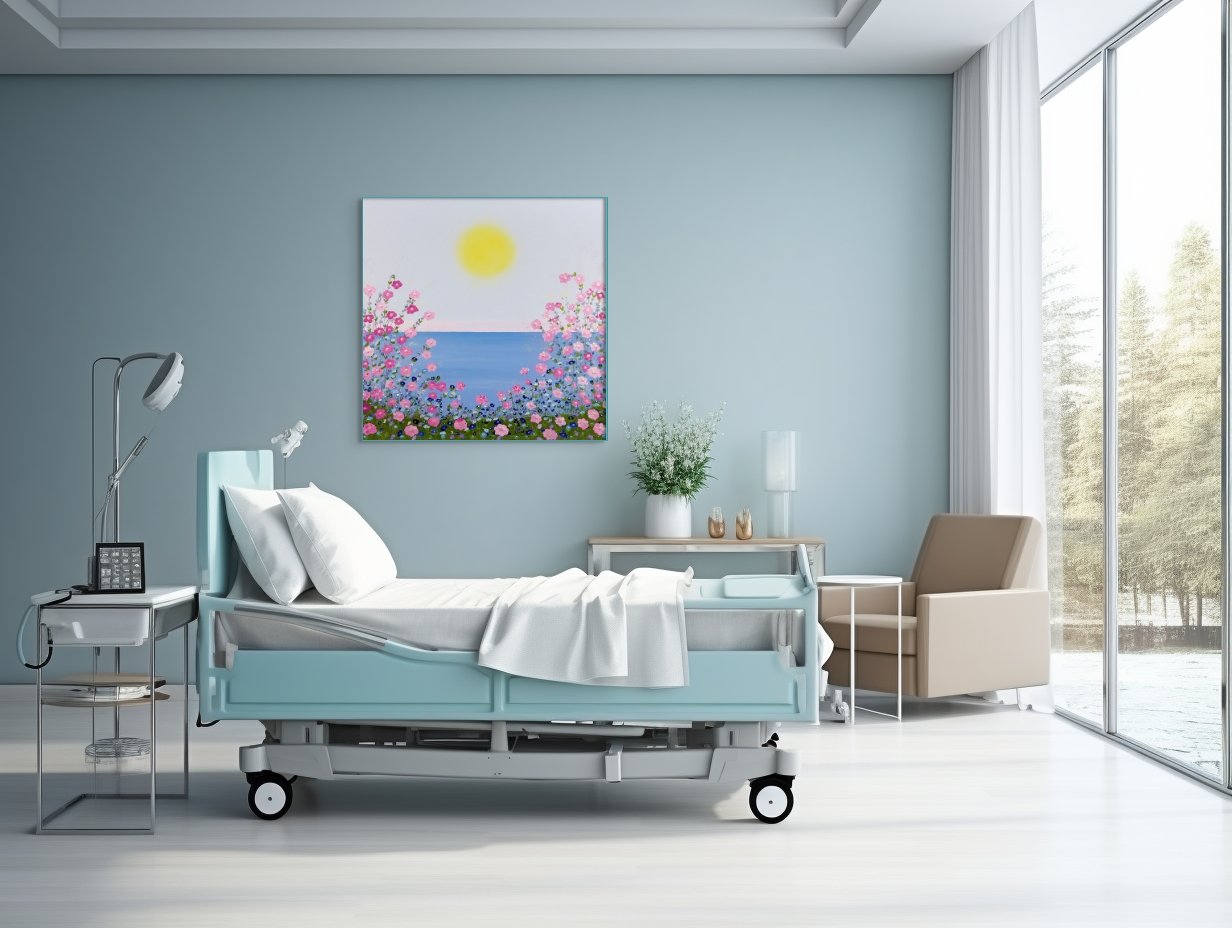
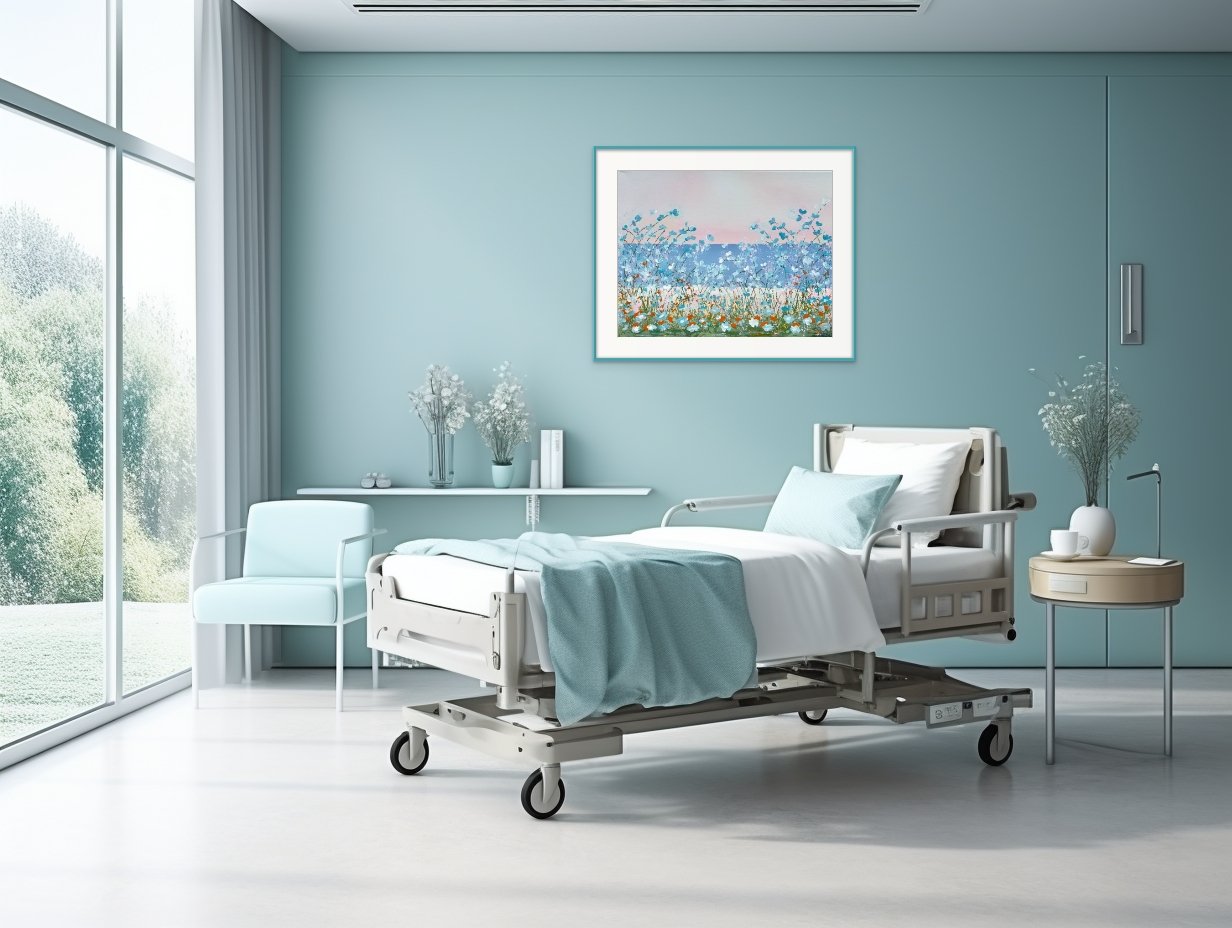
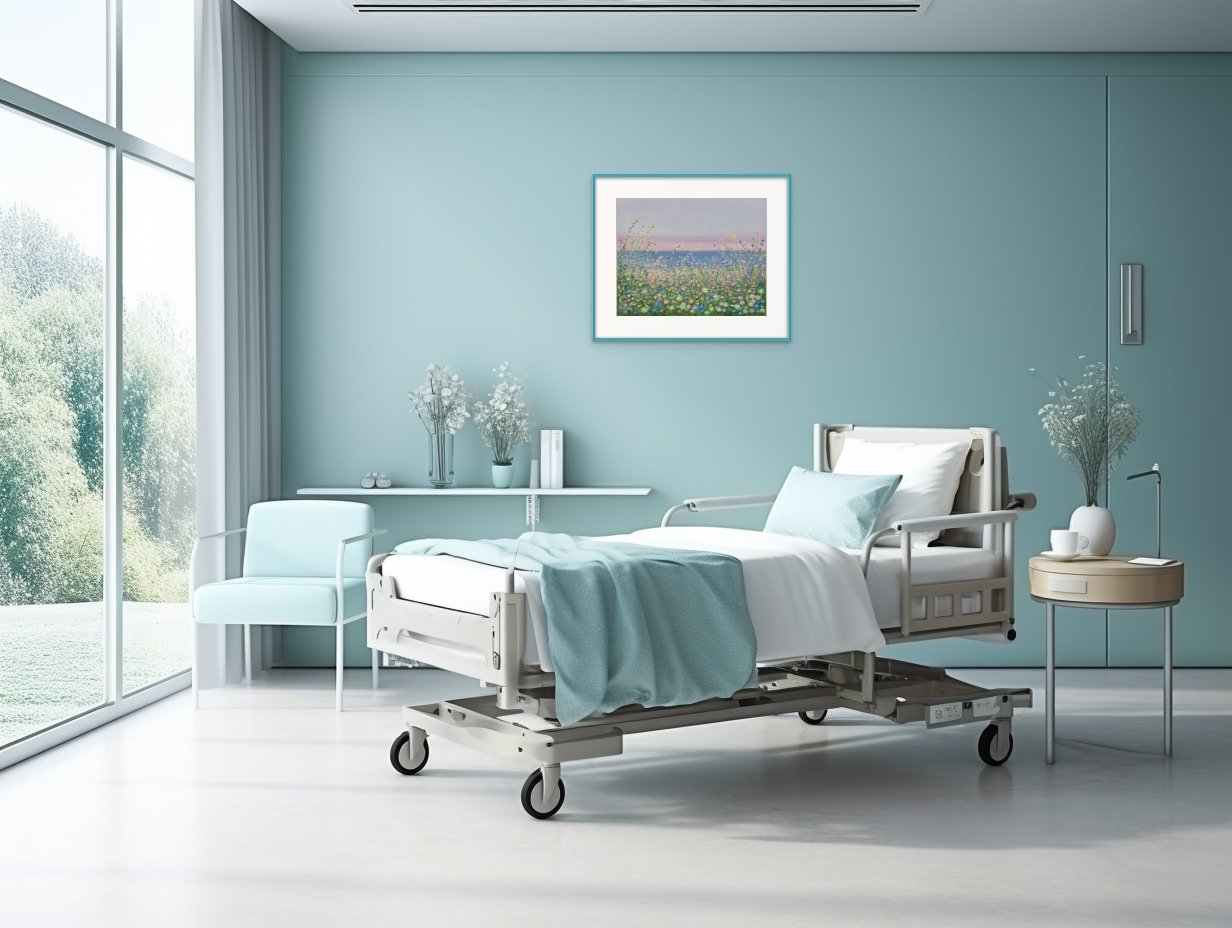
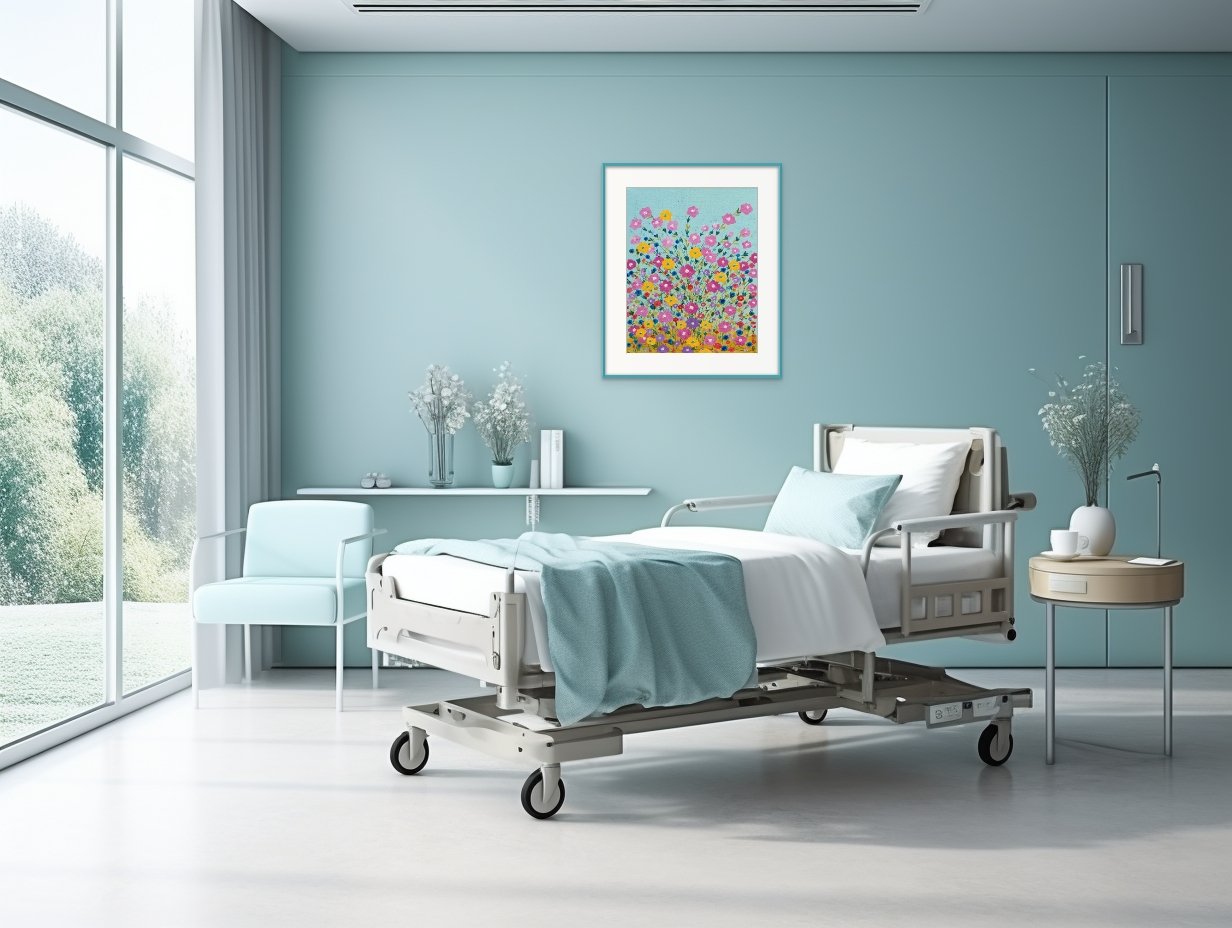
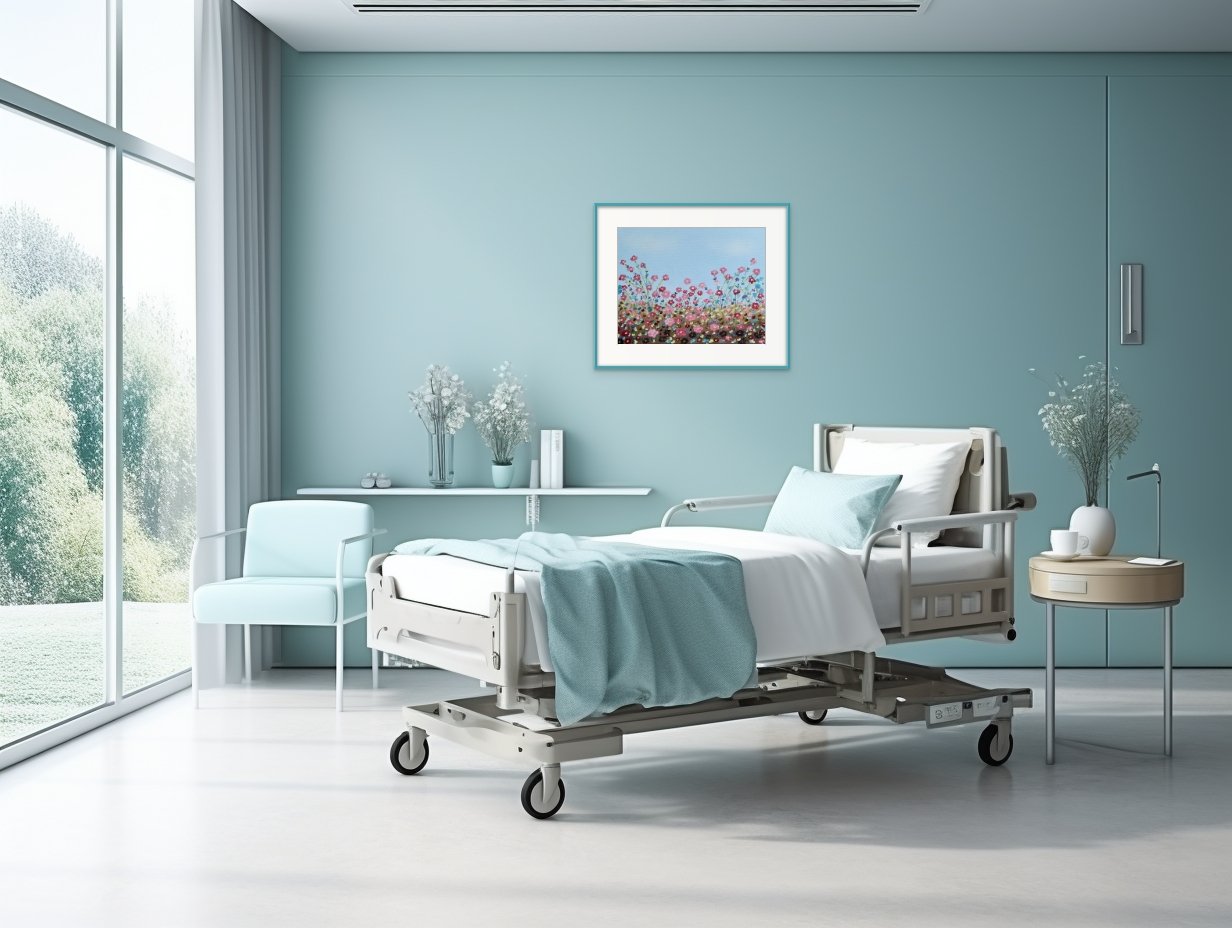
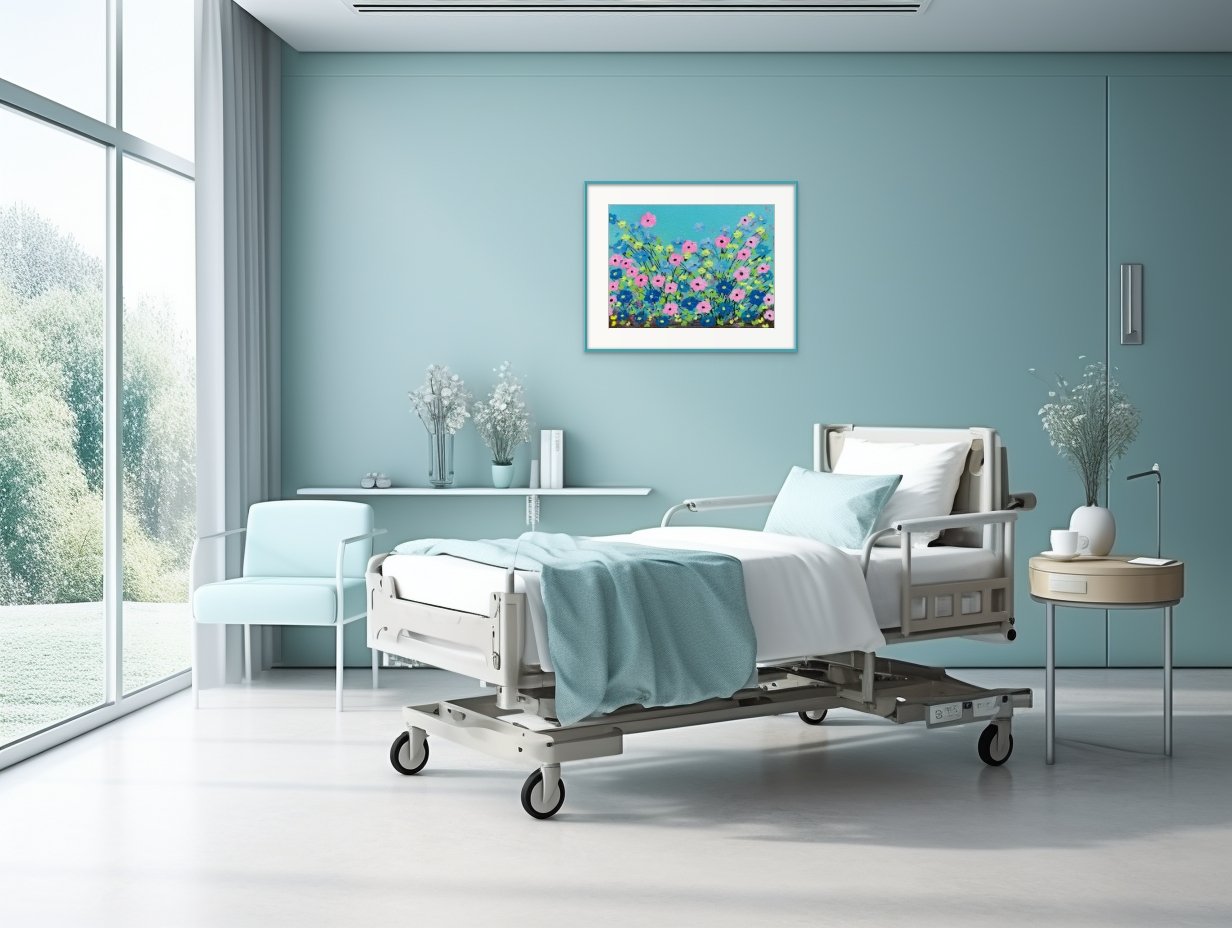
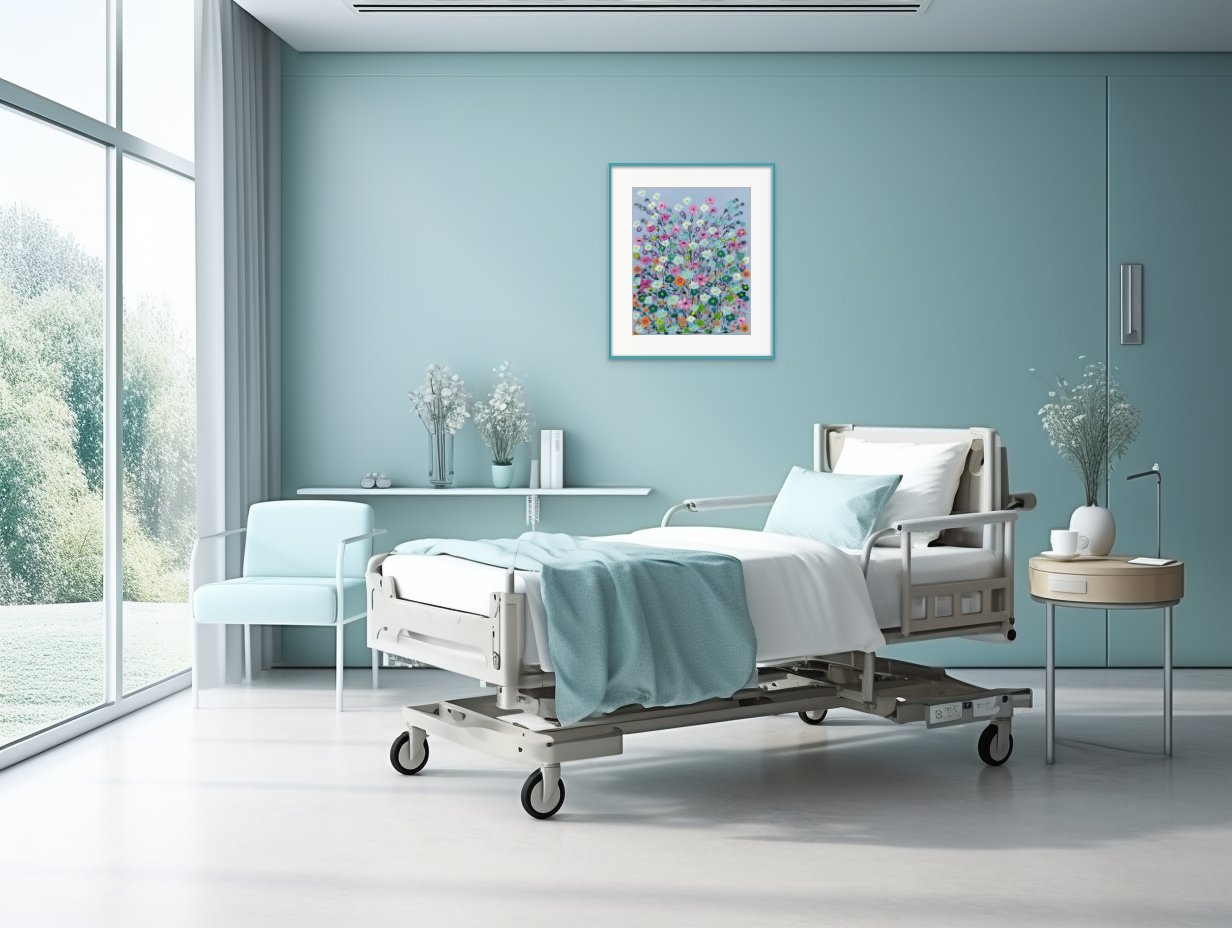
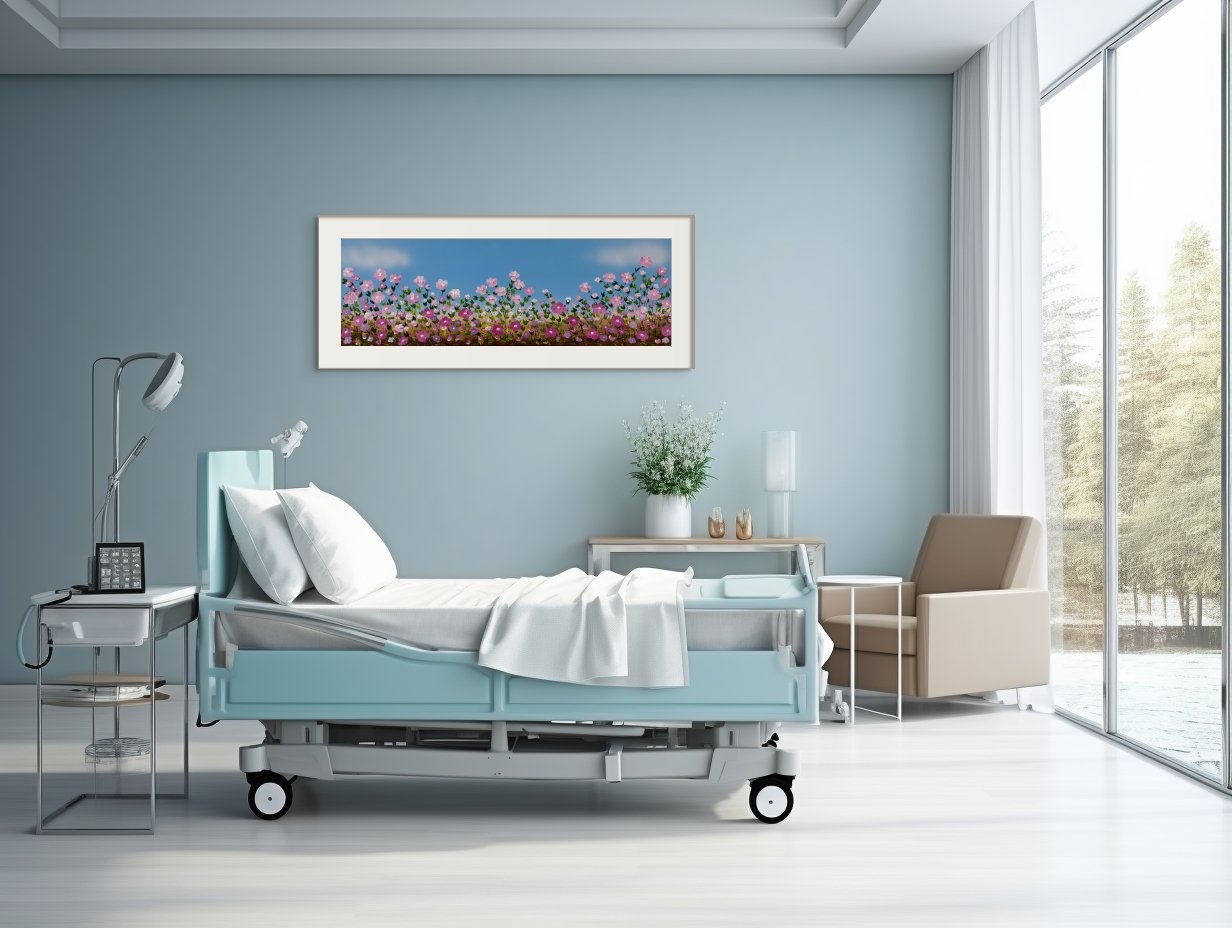
Did You Know This About Our Health And Art?
Did you know that some evidence-based designs and art are no longer categorized as just decorative? It’s the difference between designing for wall decoration to designing for health in a physical environment.
Did you know that some evidence-based designs and art are no longer categorized as just decorative?
Based on study after study, evidence-based designs and art have become part of the Environment Of Care.
“The Environment Of Care is the understanding that the experience someone has in a healthcare delivery system is a function of six components: physical environment, layout and operations systems, people, concept, and implementation.” (Integrating Evidence-Based Design, Practicing The Healthcare Design Process, The Center For Health Design)
Evidence-based designs are successful when they consider the entire Environment Of Care experience. It’s the difference between designing for just decoration (Wow! That color will look fabulous with this sofa!) to designing for health in a physical environment (Wow! That evidence-based design with those colors will look fabulous with this sofa AND they will benefit my health by meeting the guidelines of evidence-based design!).
A World Health Organization report, based on evidence from over 3,000 studies identified “prevention of illness” as a major role for the arts. What were some of the beneficial links between the arts and health?
The psychological benefits were enhanced self-efficacy, coping, and emotional regulation.
The physiological benefits included lower stress hormone responses, enhanced immune function, and higher cardiovascular reactivity.
The social benefits between arts and health showed reduced loneliness and isolation, enhanced social support, and improved social behaviors.
The behavioral benefits indication from these studies were increased exercise, an adoption of healthier behaviors, and skills development. (WHO, 2019 Report on Arts and Health)
Today, study after study shows benefit after benefit of evidence-based designs.
I am a member of The Society Of Experimental Artists and I like to experiment by taking credible scientific/medical study results and translating them into works of art. Although I have created quite a bit of art using the established evidence-based design principles and guidelines, not too much evidence-based design creation and analysis has been done with abstract art.
Here are some of my earliest experimentations into the world of evidence-based design and abstract art.
Mastering Life’s Complexities got sold to a gallery director the first day I had it on display at the gallery.
I love to donate art to raise money. Power And Gold I donated to a Crooked Tree Arts Center fundraising event in beautiful Bay Harbor, Michigan.
Power In Action is a painting I just love to have around. The colors are so deeply amazing and they move. I put it for sale on my website (https://thewonderfulworldofdorotheasandraart.com), but I haven’t turned it over to any gallery. I think I’m hoping it never sells. LOL!
With all three of these paintings, I was going after strong (at least by evidence-based design standards) POWER AND MOVEMENT WITHOUT CAUSING ANY STRESS.


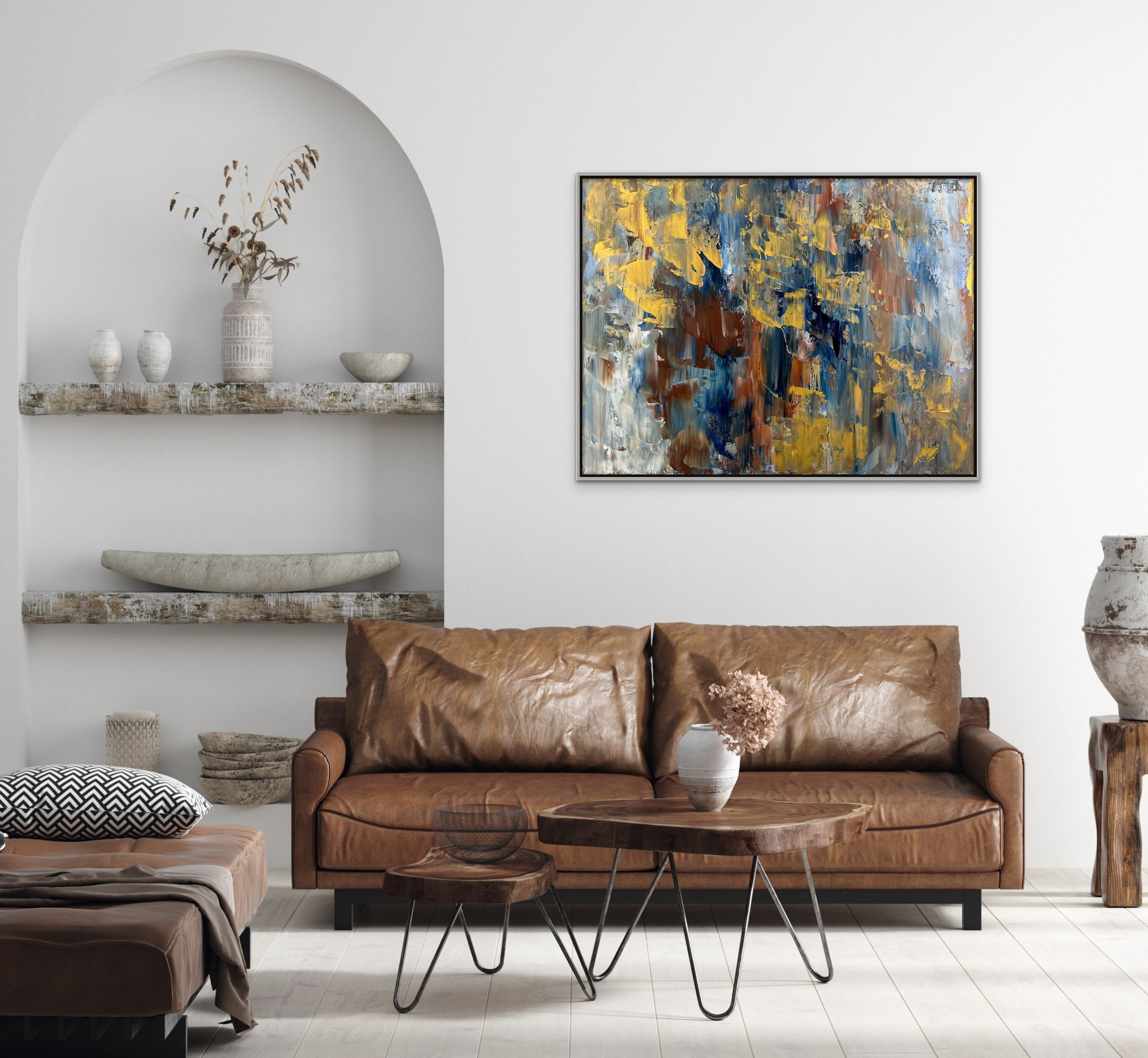
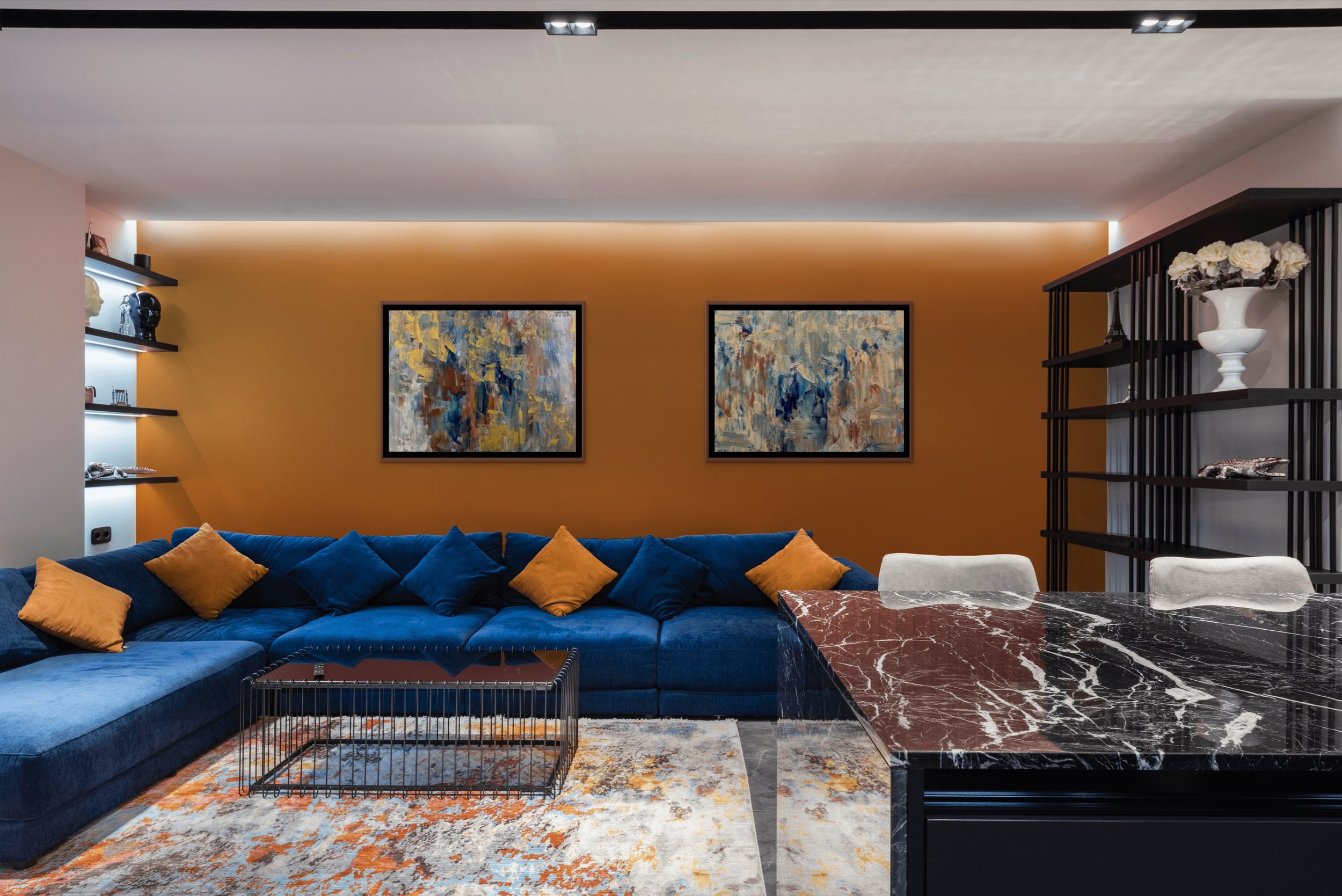

Take a peek inside my new book, 100 Days Of Happy Happy Art, Evidence-Based Design.
There’s even a chapter on neuroscience and art.
Did You Know This About Health And Art?
Did you know that Evidence-Based Design nature scenes are restorative?
Did you know that Evidence-Based Design nature scenes are restorative?
With all the talk today about Evidence-Based Design—what is it?
Evidence-Based Design is a field of study that emphasizes using credible medical and scientific evidence to influence design. Evidence-Based Design uses ideas from environmental psychology, architecture, neuroscience, behavioral economics, and more.
According to Ulrich and Gilpin, research suggests that nature art, or art with views or representations of nature will promote restoration if it contains—
calm or slowly moving water
verdant foliage
flowers
spatial openness
park-like settings or Savannah-like properties
Over the years, I have tried to create location appropriate art using these (and other) evidence-based design principles and guidelines.
Here are three paintings where the backgrounds are of a stretch of beach on Highway 23 in Northern Michigan. (Local scenes are also favored in evidence-based design.) I’ve taken some criticism over the years for not painting with enough tradition and realism. Even though I am a natural-born abstract artist who also creates evidence-based design art because it has the potential to help restore human health and happiness, I don’t mind. The huge pink clouds next to the pretty blue skies are in this first painting because that’s just how amazing the skies can be in this geographic location. (evidence-based design guideline: local scenery)
Print of Morning Majesty
Also, keeping in line with Ulrich and Gilpin’s evidence-based guideline of calm or slowly moving water, Lake Huron is amazingly still on most warm weather days. I deliberately keep my brushstrokes long and flowing. This creates the calmness, which creates a restorative/de-stressing effect. For water high-interest but not water high-focus, I blend the paint into a variety of colors.
People are often so surprised when they arrive at this location on Highway 23 because—from the horizon line to the shore—the water is often a dark blue, then medium blue, then a lighter blue, then an aqua color. The aqua color comes from an abundance of limestone. (evidence-based design: calm or slowly moving water)
Print of Beautiful And Happy
Print of Lake Huron Lovely #2
In many of these paintings, I also introduce the evidence-based guidelines of flowers and verdant foliage because people in this area love flowers. (evidence-based design: flowers and verdant foliage)
In the warmer months, many towns in the Great Lakes region burst with downtown flower festivals, downtown flower baskets, and flower sales.
This area, already a water lovers destination, also becomes a super happy flower lovers paradise.
This painting, Hope’s Sunshine, is a view of Lake Huron from flower-beautiful Mackinac Island
Take a peek inside my new book, 100 Days Of Happy Happy Art, Evidence-Based Design
There’s even a chapter on neuroscience and art.
Did You Know This About Health And Art?
Did you know there is now scientific evidence showing that art heals?
Did you know there is now scientific evidence that art heals?
That’s right. There is now clear and convincing medical evidence that viewing nature inspired compositions plays a key role in creating healing environments for us.
Certain types of art even have the power to—
reduce stress
lower blood pressure
reduce the need for pain medication
be a positive distraction
and more
As an evidence-based design (EDAC) certified artist, I like to read scientific and medical study findings and translate them into works of art.
One way I do this is through my floral designs. Each painting in this category is deliberately and strategically designed to meet one or more evidence-based design standards and guidelines.
My goal for these florals is never to create just a pretty work of art. That’s a given.
My goal is to create art that triggers the brain to create uplifting feelings of happiness and joy. The reaction I look for is not, “Oh, that’s pretty!” The reaction I want to hear as an evidence-based design artist is, “Yes, there’s something about this painting that makes me feel good as I look at it.”
Soft and simple, this evidence-based design sold as soon as it was put on display.
This evidence-based design also sold as soon as it was put on display.
Different aspects of these paintings were considered before painting. Which background color would be upbeat? How should the stems form to show joy and happiness? Where would the dividing lines be between the composition’s interest levels and stress levels? How would fun and happiness be communicated throughout the work of art?
Joy by Dorothea Sandra
